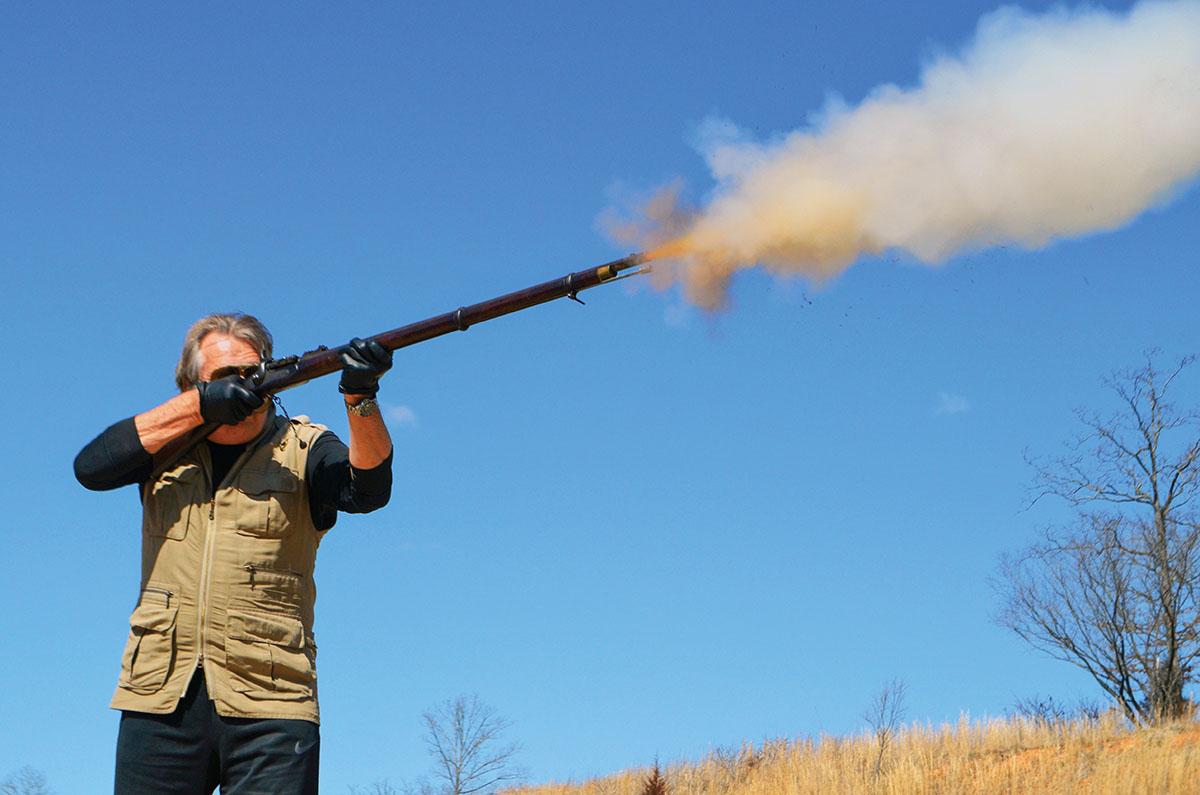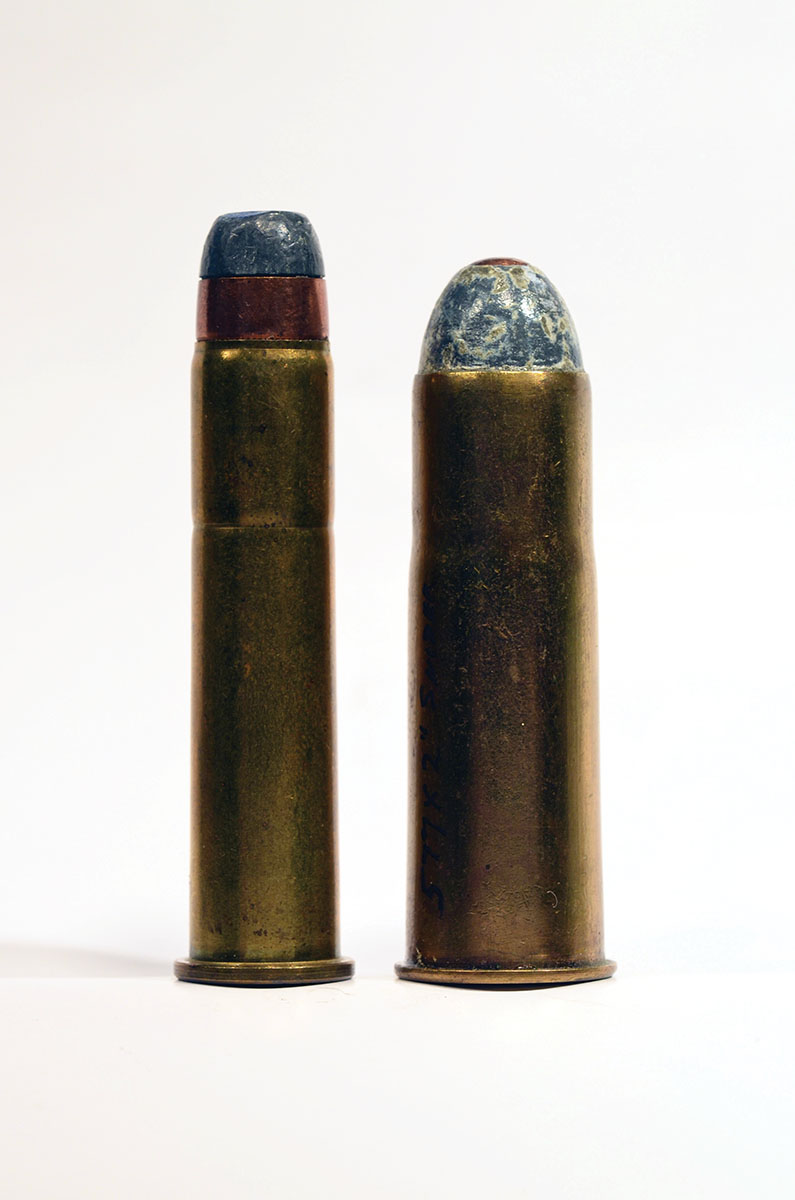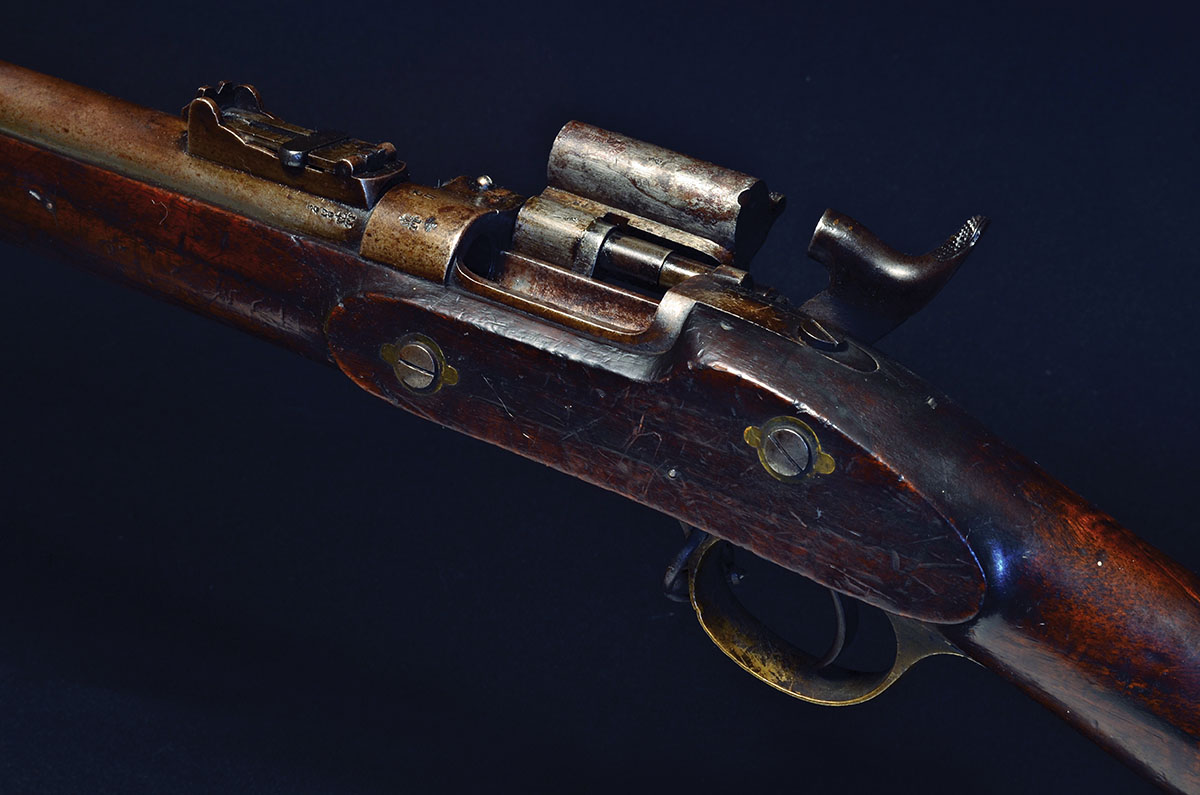The Snider-Enfield at War
15 Minutes of Fame
feature By: Terry Wieland | July, 24



The battle was the culmination of one of the most remarkable military episodes of the Victorian era. Modern historians, intent on disparaging anything with even the faintest whiff of colonialism, have sniffed that it was using a sledgehammer to snuff out a flea – that Theodore (Tewodros, he is now called) posed no threat. However, establishing a colony was not the goal. Napier’s army was in Abyssinia (now Ethiopia) to rescue several dozen hostages, held in dungeons in chains, including the British consul. Negotiations had not worked – one envoy was thrown into prison with the others – so the British, reluctantly, turned to the military.

Accustomed to facing down hordes of tribesmen with a small force of highly-trained infantry, the War Office assigned only three British battalions to Napier’s army and, since they had just completed final trials on their first breechloading rifle, armed these units with the new Snider-Enfield. It was to be the Snider’s baptism of fire and “flying colors” hardly does it justice.
From the beginning, the rifle that came to be known as the Snider-Enfield was intended as nothing more than a stopgap, and a short-term one at that. By the early 1860s, it had become apparent that the future lay not with muzzleloading rifles but breechloaders. Since 1853, the British Army had carried the superb Model 1853 Enfield and had used it in the Crimea and later, in much greater numbers, in the Great Indian Mutiny of 1857.


The War Office had two problems: The first was time. They needed a new rifle and they needed it now. The second was finances as the Chancellor of the Exchequer was notoriously tight-fisted. It was not that he begrudged the army the money for a new rifle. (After the mutiny, everyone in the British government had a new perspective on the need for military preparedness.) What the chancellor worried about was, what to do with the tens of thousands of obsolescent 1853 Enfields in arsenal storage from the Tower of London to Calcutta? They were too good to waste.
The answer lay in converting those Enfields into something usable, while at the same time seeking a permanent replacement.
The story of the development of the Snider can be boiled down to a few terse sentences: The army decided to convert the Enfield, asked the gun trade for suggestions, decided on a mechanism invented by American Jacob Snider, and proceeded to rebuild tens of thousands of rifles – ultimately, it’s estimated there were half a million conversions.

A comedian, like a modern historian, could have great fun satirizing all of the above as evidence of how stupid they all were – how “Dickensian,” which would be accurate enough because, reportedly, the Board of Ordnance was the model for Charles Dickens’s “Circumlocution Office” in Little Dorrit.
Alas for comedy, instead of a costly white elephant, the solution they finally arrived at – the Snider-Enfield – proved to be one of the great breechloading rifles of the Victorian Age, so good that when the supply of convertible Enfields ran out, they produced entire rifles from scratch with steel barrels and a perfected breech mechanism. They were made in, among other places, Belgium, France, Nepal and Afghanistan, remained in use until well into the twentieth century, and ammunition was still being produced in Canada into the 1950s.
The search for a conversion mechanism began in 1864 and ended in 1867, when the first rifles were issued to the troops. By an odd parallel, Queen Victoria’s problems with Emperor Theodore II of Abyssinia began around the same time and took about as long to resolve. The two issues collided on the plateau at Magdala.

Like the Snider, the international dispute between Britain and Abyssinia lends itself to caricature on a grand scale. It all began, bizarrely enough, with the Foreign Office in London neglecting to answer a letter. Theodore and Queen Victoria had been on friendly terms, albeit at a distance, and the queen had even sent the emperor a brace of pistols as a gift. But a letter to her in 1863 received no reply and Theodore was not a man to take such a perceived slight lightly.
Theodore was one of those men in history who are larger than life and defy easy classification. Tall and handsome, he was a professed devout Christian who could be absolutely charming, but was given to drunken rages where he slaughtered hundreds of people. To call him mercurial hardly begins to describe him. He has been called a monster on a par with Joseph Stalin, and even his apologists offer no excuse except that he had serious mental problems. Indeed, he did.
A better comparison might be with Peter the Great, who tried, using varying degrees of brutality, to transform Russia into a European civilization; Theodore tried to do the same with the backward kingdom of Abyssinia, to the point of employing German engineers to cast a huge mortar, nicknamed “Sevastopol,” which was reputed to be the largest artillery piece in the world. When the time came to use force, he was not going to be a primitive pushover.
Theodore’s response to London’s slight was to throw the British consul into a dungeon, loaded down with chains, and imprison other British nationals and several dozen missionaries. No diplomatic effort worked so, in 1867, pushed beyond endurance and tired of having its tail twisted, the British lion called on Sir Robert Napier to put together an expedition to rescue the captives.
Consul Charles Cameron was imprisoned in January 1864, beginning the long diplomatic impasse. In June of that same year, the War Office committee held its first meeting to find a conversion mechanism for the Enfield. It says something, to me at least, of the workings of both the Foreign Office diplomats, politicians, and War Office army officers, that it was almost four years before the work of both collided on the plateau at Magdala.
The Enfield conversion presented two serious problems, and they were intertwined. One was to find the mechanical conversion, the other to find a cartridge. Since the rifle cartridge as we know it had not been fully developed, it was like inventing an internal combustion engine and then looking for something to fuel it.

The committee called for submissions from gunmakers and inventors and narrowed it down to nine candidates, including one from Jacob Snider, an American from Philadelphia. This is how he is usually described, but it conveniently ignores his association with the French Schneider brothers, Georges and François-Eugène, and their inventions and patents, and also George Daw, a London gunmaker who had acquired the rights to another French invention, Pottet’s central-fire cartridge.
All of the above became involved in the evolution of the Snider mechanism and its eventual acceptance. The mechanism itself was fairly simple. Three inches at the breech end of the barrel was cut off and replaced by a “shoe” that included a hinged breechblock that swung out clockwise. This breechblock included a striker and an extractor. The striker was activated by the Enfield hammer, powered by the standard Enfield lock.
Like all great inventions that last long after they are expected to, this one was simple, rugged, foolproof, and it could be produced in volume on modern machinery; or one at a time using the oldest and crudest methods.
Obviously, it required a cartridge, and that job was undertaken by the famous superintendent of the Royal Laboratory at Woolwich, Col. Edward Mounier Boxer. He worked his way through various designs involving iron washers at the base, coiled paper, then coiled copper, and finally, the drawn-brass 577 Snider as we know it today. Along the way, he invented the primer that bears his name.
One major difficulty facing Col. Boxer was the necessity of fitting cartridge and bullet to the .577-inch Enfield bore, originally intended for muzzle-loading but he managed, and the 480-grain 577 bullet proved exceptionally effective.
Entire books have been written about every one of these events and developments – Theodore II, the history of Abyssinia, the Napier expedition, the Snider, its cartridge – so trying to condense them all into one story is tricky. But here’s a precis:
Sir Robert Napier assembled an armada of more than 250 vessels to transport animals, engineers, troops, and stores to the Red Sea coast where, first, they had to construct a port and then a 20-mile railway line to their staging camp. The expedition included 44 transport elephants from India, 15,000 fighting men, and twice that number in support.
They scoured Europe for Maria Theresa dollars, the 1780 minting, and even commissioned the mint in Vienna to produce more. The Maria Theresa was the only currency the natives would accept and, like Wellington a half-century before, Napier intended to purchase everything he needed rather than alienate the locals by looting.

For newspaper coverage, the expedition was accompanied by the novelist G.A. Henty (writing for London’s The Standard) and Henry Morton Stanley of the New York Herald. It even included a representative from the British Museum to purchase any treasures that might become available.
Napier shrewdly negotiated with rival Ethiopian princes to ensure they did not side with the Emperor, whom they hated and feared anyway. By the time Napier’s army reached Magdala, Theodore was fighting the British on his own. His army, once numbering 100,000, was shrinking from desertion, and his artillery, although formidable, proved ineffective; the “Sevastopol” exploded the first time they fired it, and although his troops possessed modern weapons to go with their spears and swords, they lacked discipline.
The British infantry – the 33rd (Duke of Wellington’s), 4th King’s Own, and 45th (Sherwood Foresters) – were armed with 4,000 Snider-Enfields and 90 rounds per man.
Both Henty and Stanley noted in their dispatches the speed of fire – Stanley estimated a rate of nine or 10 rounds per minute, as opposed to the 1853 Enfield’s three, and it was accurate for massed infantry fire out to a thousand yards.
Theodore’s army broke, leaving almost half its number dead or wounded; Theodore committed suicide with one of the pistols he’d received from Queen Victoria, the prisoners were rescued, and Napier’s army marched back to the coast and left Abyssinia to its own devices. Napier became Lord Napier of Magdala and ended his career as a field marshal. An equestrian statue stands in London near Queen’s Gate.
As Andy Warhol predicted, the Snider-Enfield had its “15 minutes of fame” (30 minutes, actually) but such was the reputation it established that, even after it was replaced in 1871 by the Martini-Henry, it continued in official, semi-official, and civilian use for the better part of the next hundred years.


